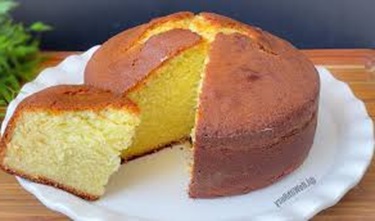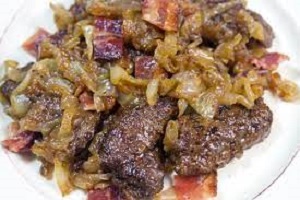Nigerian Cake Recipe: Baking a Cake Tips & Tricks
Nigerian Cake Recipe: Baking a Cake Tips & Tricks
Nigerian cake is delightfully simple, undeniably sweet, and incredibly satisfying.
Even though it doesn’t feature extravagant ingredients like chocolate or whipped cream, it remains a beloved staple in many homes and parties.

Its rich, buttery taste and soft, fluffy texture are what make it stand out.
Whether you’re baking for a Nigerian birthday cake, a wedding, a holiday, or simply preparing a treat to enjoy during the week, this guide walks you through how to make a classic Nigerian cake from scratch.
So, tie on your apron, preheat your oven, and get ready to master this cherished West African dessert!
Nigerian Cake Recipe: Why Nigerians Love This Cake
Unlike many Western-style cakes, Nigerian cake typically avoids complex flavors or heavy frostings. Instead, it focuses on a smooth, buttery profile that melts in your mouth.
It’s this simplicity that keeps Nigerians coming back for more. The recipe below forms the foundation of most Nigerian cake varieties.
From here, you can add your subtle twist—but be careful not to stray too far, or you may lose its signature flavor.
Nigerian Cake Recipe: Ingredients: What You’ll Need
Before you begin, make sure you gather all your ingredients. This step is crucial, as proper preparation ensures smooth baking.
For a standard-sized Nigerian cake, you will need:
- 2 cups of all-purpose flour
- 2 teaspoons of baking powder
- 1 teaspoon of baking soda
- 1 cup of granulated sugar
- 3 large eggs
- 1 cup of vegetable oil
- 1 cup of milk
- 1 teaspoon of vanilla extract

Step-by-Step: How to Bake Nigerian Cake Recipe
Although the process is straightforward, each step requires attention to detail. Follow these steps for a fluffy, moist cake every time.
Step 1: Preheat and Prepare
First, preheat your oven to 350°F (180°C). Meanwhile, grease your cake pans with butter or oil. This prevents the cake from sticking and helps it release cleanly after baking.
Step 2: Cream Butter and Sugar
Next, in a large bowl, cream together the butter and sugar until the mixture becomes light and fluffy. You can use a hand mixer, a stand mixer, or a sturdy whisk.
Step 3: Add Eggs Gradually
Then, beat in the eggs one at a time. After each egg, make sure to mix thoroughly. This gradual incorporation helps stabilize the batter and enhances the cake’s structure.
Step 4: Incorporate Dry Ingredients
After that, sift together the flour, baking powder, and baking soda. Gradually add the dry ingredients into the batter. Continue mixing until everything is well combined.
Step 5: Add Milk and Vanilla
Now, pour in the milk and add the vanilla extract. Stir gently until the batter is smooth and lump-free. If needed, use a spatula to scrape the sides of the bowl.
Step 6: Fill Your Cake Pans
Finally, pour the batter into your greased pans, filling them no more than two-thirds full. This leaves room for the cake to rise beautifully without overflowing.
Baking a Cake, Cooling, and Serving
Place the pans in the center of your oven. Bake for 30–40 minutes, or until a toothpick inserted into the center comes out clean.
Once baked, remove the cakes from the oven and allow them to cool in the pans for 10 minutes. Then, transfer them to a wire rack to cool completely.
At this point, your cake is ready to be frosted, decorated, or simply served as is. It’s perfect with a cold drink, a cup of tea, or alongside a scoop of ice cream.
Pro Tips for Success
- Measure accurately: Always level your ingredients with a flat edge to avoid a dense or dry cake.
- Avoid over-mixing: Once you add the flour, mix just until combined.
- Room temperature ingredients: Butter, eggs, and milk should be at room temperature for best results.
- Preheat the oven fully: Starting with a properly heated oven ensures even baking.
Customizing Your Nigerian Cake
If you want to add a little flair without losing the essence of the cake, try these additions:
- A hint of nutmeg or lemon zest for a gentle twist
- A splash of rum for a festive flavor
- A fruit topping or jam layer between tiers
Before You Make Nigerian Cake: Key Preparation Steps
To ensure your baking session goes smoothly from start to finish, here are some important steps to take before you even turn on the oven:
- Clean and dry all utensils
Start by making sure all your baking tools and appliances are clean and completely dry. - Check your ingredient list.
Double-check—then check again—that you have every ingredient on hand. It’s frustrating to realize halfway through that something’s missing. - Keep your recipe nearby.y
Whether you prefer a printed recipe or a video tutorial, have it close by. For video lovers, position your laptop or phone where it’s easy to follow along. - Once everything is set, let’s begin.
With your ingredients gathered and your tools ready, you’re all set to create a classic Nigerian treat.
Expert Tips for Baking the Perfect Nigerian Cake
Take your cake from good to great with these helpful baking tips:
- Add more flavor by mixing in a tablespoon of grated orange zest or a teaspoon of ground cinnamon to the batter.
- Make sure your butter, milk, and eggs are at room temperature before starting for a smoother batter and better rise.
- If you don’t have an electric mixer, whisk the eggs and sugar by hand. It takes a bit more effort, but it works.
- You can use a variety of cake pans, including round, square, or bundt pans, for different styles.
- For a layered cake, double the recipe and bake the batter in two separate pans. Once cool, spread frosting between the layers and over the top.
- Consider adding one or two tablespoons of brandy along with the vanilla extract to give your cake a rich, subtle depth of flavor.
- When dusting with icing sugar, use a fine-mesh sieve to distribute the sugar evenly and give your cake a neat, polished look.
- Use high-quality ingredients whenever possible. Fresh eggs, real vanilla, and good butter make a noticeable difference.
- Avoid over-mixing once the flour has been added. Mix only until combined to prevent a dense or tough cake.
- Make sure you are using the right size cake pans. If the pan is too small, the batter may overflow. If it’s too large, the cake may turn out thin and dry.
By following these tips, you can consistently achieve that soft, moist, and flavorful Nigerian cake that everyone loves.

Common FAQs on Baking a Nigerian Cake
Can I use self-raising flour instead of all-purpose flour?
Yes, you can substitute self-raising flour for all-purpose flour. However, you should omit both the baking powder and baking soda from the recipe since self-raising flour already contains leavening agents.
Can I use butter instead of vegetable oil?
Yes, butter can be used in place of vegetable oil. Keep in mind that it will slightly change the flavor and texture of the cake, giving it a richer and more traditional taste.
Can I use almond milk instead of regular milk?
Absolutely. Almond milk is a suitable alternative, but note that it may slightly alter the cake’s flavor and texture.
Can I add nuts or chocolate chips to the batter?
Yes, you can. Just be aware that including extras like nuts or chocolate chips may affect the baking time and final texture of the cake.
Can I make a vegan Nigerian cake?
Yes, a vegan Nigerian cake is entirely possible. Replace the eggs with applesauce, mashed bananas, or chia seed gel as your egg substitute.
How long can I store a Nigerian cake?
You can store the cake in an airtight container at room temperature for up to five days. Alternatively, refrigerate it to extend its shelf life up to one week.
Can I make a gluten-free Nigerian cake?
Yes, you can. Simply use a gluten-free flour blend in place of the all-purpose flour. Be sure to follow any specific instructions provided with your gluten-free flour brand for best results.
Can I bake a Nigerian cake without an oven?
Yes. Nigerian cakes can be baked using a stovetop method or in a pressure cooker. Just ensure you follow appropriate temperature and timing adjustments.
Can I use margarine instead of butter?
Yes, margarine can be used. However, this will subtly affect the flavor and may yield a slightly softer texture compared to using butter.
Can I add dried fruits to my Nigerian cake?
Definitely. Dried fruits such as raisins, cranberries, or chopped dates can be added to the batter to enhance flavor and add texture.
Can I adjust the size of the Nigerian cake?
Yes, the recipe can be scaled up or down. Be sure to adjust baking times according, depending on the size of your cake pans and the volume of batter.
Conclusion
Baking a Nigerian cake is not only a delicious adventure but also a wonderful way to celebrate the rich culinary traditions of Nigeria.
Whether you’re preparing it for a birthday, wedding, holiday, or a casual dessert, this simple yet satisfying cake recipe is a perfect foundation to build on.
With just a few pantry staples and a bit of baking know-how, you can whip up a moist, flavorful cake that everyone will love.
So next time you’re craving something sweet, put on your apron, gather your ingredients, and preheat that oven. A warm slice of homemade Nigerian cake might just become your new favorite treat.


